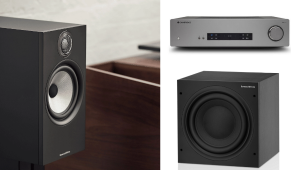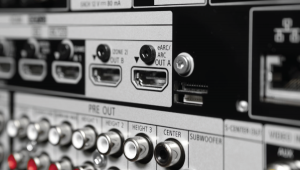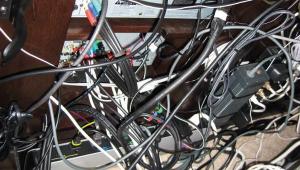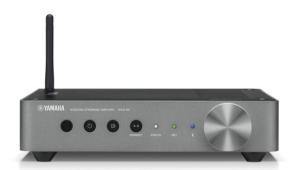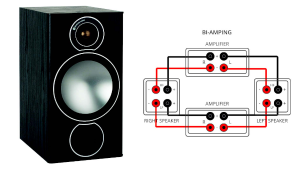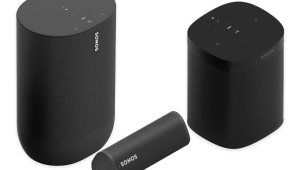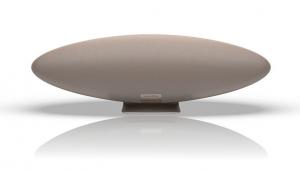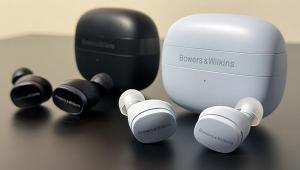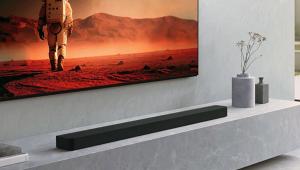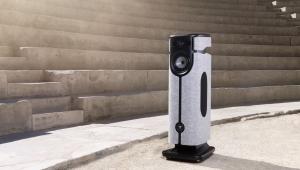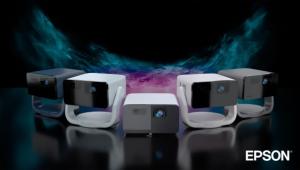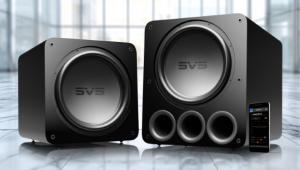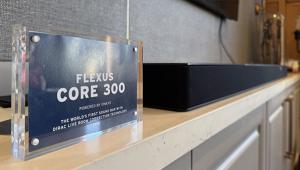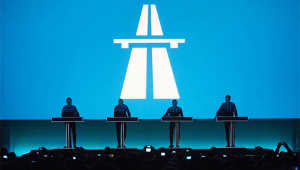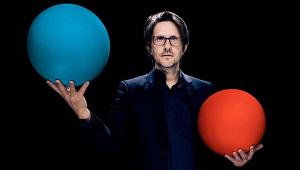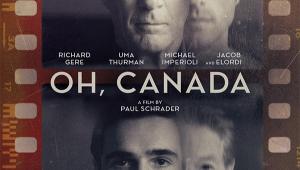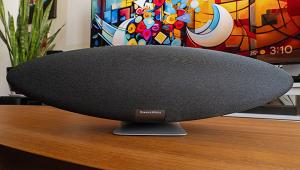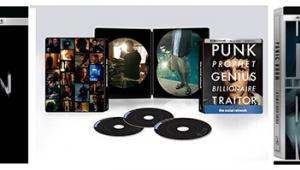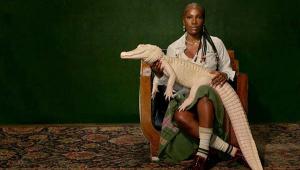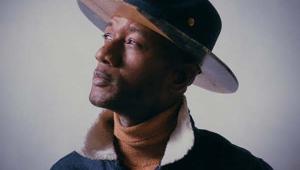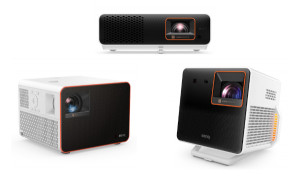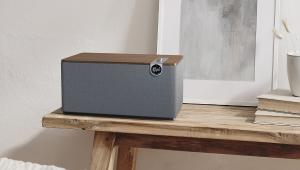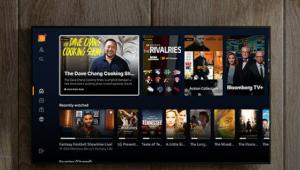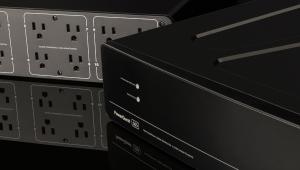I have similar annoyances. Welcome to the 'convenience' of hdmi. Here's my devices:samsung ht-as720 avrsamsung LN26A450 tvsony ps3All connected with hdmi. If I want hdmi-cec to work, I have to turn on the tv first, then the avr exactly a second later. If I'm lucky the avr will switch wrongly to 'sat digital' instead of 'sat hdmi'. That's how I know it's linked up right for hdmi-cec, and I switch back to 'sat hdmi' (sat is the hdmi connection to the tv). Now I can control the avr volume with the tv remote, and when the tv sleeps, so will the avr. I get that 'mode not supported' from the ps3 every once in a while too. I just turn the tv & avr off & on.I figure one of two things: 1. some of the devices came out before that hdcp compliance test2. one of the monoprice hdmi cables wouldn't pass the new hdmi.org 'highspeed logo' test that's coming.What's wrong with hdmi-cec? Is there no compliance
TV on Blu-ray, Sound Problems, Misdirected Audio

Like you, I am a fan of Star Trek (the original series) on Blu-ray, and I'm wondering if other TV shows I love will possibly be transferred to Blu-ray. What is required for old shows like these to go from standard-definition to high def? Can any show be converted to Blu-ray or do they have to be recorded in a particular format? What does the process involve?
Nik
The vast majority of TV shows past and present are originally shot on 35mm film, which is then transferred to video in a process called telecine. Before HDTV came along, that process resulted in standard-def video that was recorded on videotape and broadcast; it was also released on DVD. But film has a very high inherent resolution—much higher even than Blu-ray—so it's relatively easy to go back to the original film and telecine it in high definition.
All that's required to release older TV shows in high def on Blu-ray is access to the original film—which must be in reasonably good condition—and a high-def telecine machine. Another factor is the time technicians must spend to do the telecine and author the Blu-ray. All of this takes money, and the studios won't do it unless they believe it will make a profit.
A Plethora of Problems
I have a Samsung LN52A750 LCD TV, Yamaha RX-V563 AVR, Sony PS3, and DirecTV HD DVR. I have the DVR connected via HDMI to the AVR, the PS3 connected via HDMI to the TV and optical to the AVR, and the AVR connected via HDMI to the TV.
I have experienced several problem scenarios:
1. When I'm watching DirecTV and I select a recorded HD program, the sound from the AVR sometimes drops out. If I change inputs on the receiver back and forth, the sound will eventually restore itself. Video is okay.
2. While playing the PS3, I sometimes get a message that says, "Mode Not Supported." If I unplug the HDMI from the TV and plug it back in, that sometimes fixes it, but other times I am not so lucky, and I have to do a video reset on the PS3.
3. When switching inputs on the AVR, I get a "pop" sound in my surround speakers.
It just seems that my system has a hard time switching inputs from HDMI sources, and it is very frustrating. I am not sure which equipment is the cause. It does not happen all the time, making troubleshooting very difficult.
Jeff Dickerson
First of all, your HDMI connection scheme is not ideal. For example, you say the PS3 is connected to the TV via HDMI and to the receiver via optical—why not connect the PS3's HDMI output to the AVR?
The best approach is to connect the HDMI output from both sources to the AVR's HDMI inputs and the receiver's HDMI output to the TV; no other connections are necessary. That way, you simply select which source you want to watch from the receiver, which handles the audio from the selected source and sends the selected video to the TV. This might solve the second problem you cite.
The DirecTV issue sounds like it might be a problem with the DVR hardware; contact DirecTV for this. Alternatively, it might be a defect in that particular HDMI input on the AVR; try connecting the DVR's HDMI output to the AVR's other HDMI input and see if the problem persists. If it doesn't, the original input is probably defective; if the problem remains, it could be the DVR or AVR.
Regarding the PS3, have you updated its firmware to the latest version? That might help.
As for the pop in the surrounds when you switch inputs, I would think that's a problem in the AVR that might require an authorized service tech. If it's not a loud pop, it's probably not harmful, though I'm sure it's annoying.
Misbehaving Denon
I have a Panasonic TC-P58V10 connected to a Denon AVR-3310 receiver via HDMI and a PS3 Slim and Xbox 360 Elite, both connected to the Denon via HDMI. Finally, I have a Motorola cable box connected to the Denon with a component cable. The picture and sound from the cable box are great, but I have a problem when playing with the Xbox or PS3.
When starting either game system with my Harmony remote, everything starts up fine, but the sound comes from the TV rather than my Paradigm speakers. When I manually turn on the game system, wait a few seconds, turn on the TV, wait another few seconds, and then turn on the receiver, the audio comes from the speakers. Conversely, if the game system, TV, and receiver are turned on more or less simultaneously, the audio comes from the TV speakers.
When everything is fine, the Denon's front panel shows the Digital and PCM signal indicators along with HDMI, Auto, and AL24. When the sound goes to the TV, the Denon's front panel shows signal indicators for Analog, HDMI, and Auto. I can induce this problem by merely changing the input on the Denon from the Xbox or PS3 to something else and right back again. Doing so routes the sound to the TV. To get the Denon to route the sound back to the Paradigms, I must turn off the AVR, then turn it back on.
I know that everything is hooked up correctly, and the receiver is set to the right inputs and settings. I just can't understand why my receiver needs to be turned on after the source hardware in order for it to route the sound to my speakers.
Chris Moore
That is a puzzler alright. I spoke about your problem with my Denon contact, who says to make sure you have the latest firmware update in the 3310, which is accomplished by connecting the AVR's Ethernet port to your broadband router. Also, he recommends that HDMI CEC (Consumer Electronics Control) should be disabled in all devices. (This function goes by different names in different devices.)
Finally, he recommends that you make sure the Panasonic's firmware is up to date, and he speculates that the plasma might have a very tight HDMI-HDCP authentication window, which could be addressed by altering the power-up procedure. You can program the Harmony remote to pause for a few seconds after turning each device on—make sure the AVR is powered up last—which should solve at least part of the problem, though it won't help when switching inputs on the AVR once everything is on.
If you have a home-theater question, please send it to scott.wilkinson@sorc.com.
- Log in or register to post comments

Starting in the 70s, many sitcoms moved to videotape as a cost-cutting measure ("All in the Family", "Three's Company", "The Mary Tyler Moore Show", "WKRP in Cincinnati"). Naturally, the shows recorded on videotape were recorded in standard def. They will not upconvert as well as the older 35mm film originated series. (source for comedy series on video tape: "Television Comedy Series" ISBN 0-89950-088-9)

One of the inherent "issues" with HDMI connections that surprisingly is rarely discussed, is that when it comes to switching between sources on an AVR, for example, it(HDMI) doesn't "like" two sources to be on at the same time when the switch is being made from one to another. In other words, if you are moving from watching TV to watching a movie on your BR player, DON'T turn on the BR player until you have switched to that input source. I found this HDMI "issue" in a one line "blurb" in the owner's manual of my Marantz AVR. Unfortunately, programmable remotes, like the Harmony, don't help since they tend to turn on the new source item first(while the input switch is in progress).Just to make it a little more "interesting", try adding additional interfaces(such as video processors) and additional HDMI cables between your source item, AVR and monitor and then you will start having fun waiting for the "handshake" to eventuall

^The Harmony remotes can be setup to have them do the steps in a certain order. You can tell it to 1. Turn off old video source2. Change input source on the TV3. Turn on new video source.You can also set a delay as to how long it will pause between steps.

Star Trek was an interesting example about the ease converting old TV shows to HD for Blu-Ray. It turns out that the sequel "The Next Generation" would be extremely difficult to transfer in HD. While the live action was filmed, the special effects were done in SD video as was the editing. So to get true HD versions you'd have to find the original film elements (assuming they still exist) and redo all of the special effects.

There is an audio dropout issue with directv that they are blaming on AC3 audio encoded for dolby digital and mpeg4. Directv claims that the source is the issue. It is repeatable in recorded programs same spot every time. You can sorta get around it by turning off dd in the dvr. Not a great solution so I have just been putting up with intermittent drops. It sucks.

Hi, regarding to the question by reader:Jeff Dickerson on ideal connecton of HDMI the AVR, I have an older AVR Yamaha RX3000 which was pre HDMI, and I use PS3 as my Blu-ray player so the only choice of connection for my system is run n HDMI from PS3 to my Pioneer Plasma TV, and ru an optical cable from PS3 to my Yamaha RX3000. Of course I can always upgrade my AVR.


